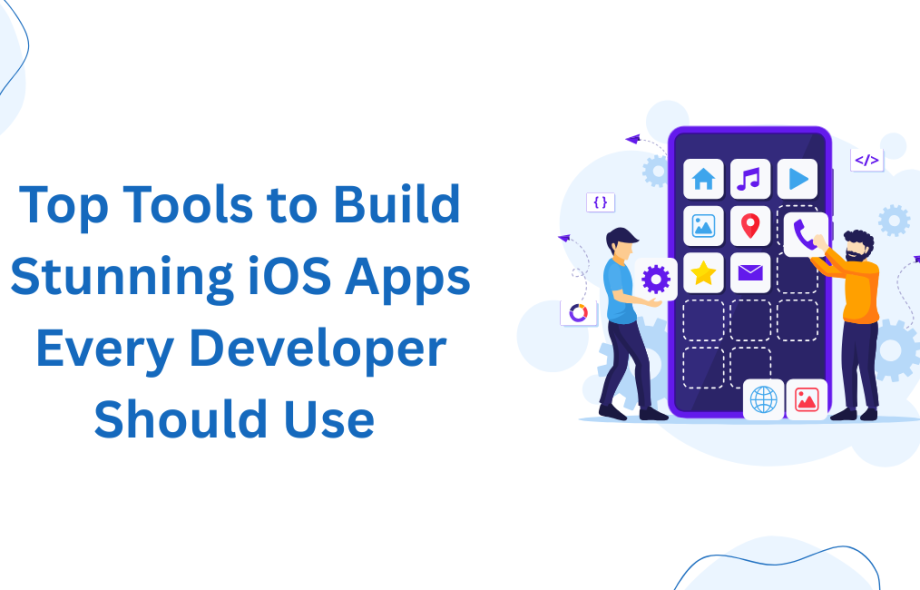So, you’re diving into iOS app development? Great choice. The iOS ecosystem is not only known for its loyal user base but also its potential for generating solid revenue. But here’s the catch: building a stunning, high-performance iOS app isn’t just about writing great code — it’s about using the right tools.
This guide will walk you through the top iOS development tools every developer — beginner or pro — should keep in their digital toolbox. Let’s gear up!
IDEs (Integrated Development Environments
- Xcode – Apple’s Official IDE
You simply can’t talk about iOS development without mentioning Xcode. It’s Apple’s official IDE and comes packed with:
- Swift and Objective-C support
- Storyboard for designing UI
- Integrated simulator
- Debugger and Instruments for performance
Whether you’re a solo developer or working with an iOS app development company in Canada, Xcode is an industry standard you just can’t ignore.
2. AppCode – JetBrains Alternative
If you’re not a fan of Xcode’s UI or want more intelligent coding features, AppCode by JetBrains is your friend. Built on IntelliJ, it offers:
- Smart code analysis
- Swift, Objective-C, C++, and even JavaScript support
- Seamless integration with CocoaPods, Git, and Reveal
Downside? It’s not free—but many find the productivity boost worth it.
3. UI/UX Design Tools
1. Sketch
Need to create pixel-perfect app designs? Sketch makes wireframing and UI design super fast and efficient.
- Lightweight and intuitive
- Perfect for iOS-specific UI kits
- Works great with Zeplin for hand-off
2. Figma
For collaborative design work, Figma is the MVP. You can co-design in real time — no more sending files back and forth.
- Cloud-based, no installation needed
- Excellent prototyping tools
- Great for working with developers
3. Adobe XD
Want to add animated transitions or interactions? Adobe XD is your creative playground.
- Auto-animate
- Easy drag-and-drop UI building
- Supports plugins and third-party integrations
4, Cross-Platform Development Tools
- Flutter
Flutter by Google allows you to write one codebase and deploy on both iOS and Android.
- Dart language
- Beautiful UIs with Material & Cupertino widgets
- Fast development with hot reload
Perfect if you want iOS and Android covered without doubling your workload.
2. React Native
Built by Facebook, React Native lets you use JavaScript to build native mobile apps.
- Reusable components
- Large community & libraries
- Ideal for startups
If you’re planning to hire iOS app developers, make sure they’re well-versed in one or more of these frameworks for faster and cost-effective development.
3. Xamarin
If you’re a .NET or C# fan, Xamarin is your ticket into mobile apps.
- Use Visual Studio
- Share code across platforms
- Native API access
5. Backend Services & APIs
- Firebase
Google’s Firebase offers a full suite of tools:
- Realtime database
- Authentication
- Cloud functions
- Hosting and storage
It’s like a backend-in-a-box for indie developers.
2, AWS Amplify
Want more control and scalability? Go with AWS Amplify.
- Easily connect with GraphQL and REST APIs
- CI/CD support
- Hosting and analytics
- Great for enterprise-level applications.
6. Testing & Debugging Tools
- XCTest
Built right into Xcode, XCTest lets you write unit tests, performance tests, and UI tests.
- Easy to integrate
- Works with CI/CD
- Comes with code coverage tools
2. TestFlight
Apple’s very own beta testing platform. Just upload a build and invite testers — easy peasy.
- Free and native
- Supports internal & external testers
- Required for public beta distribution
3. Charles Proxy
Want to debug API calls? Charles Proxy shows all HTTP/S traffic.
- Inspect and throttle bandwidth
- Repeat and edit requests
- SSL proxying support
7. Performance Monitoring Tools
- Instruments (Xcode)
Monitor your app’s performance directly from Xcode.
- Memory leaks
- CPU usage
- Energy impact
2. Crashlytics
Provided by Firebase, Crashlytics gives detailed crash reports.
- Real-time insights
- Tracks non-fatal issues
- Pinpoints line of code causing crash
8. App Analytics Tools
- Mixpanel
Understand how users engage with your app.
- Funnel analysis
- Retention tracking
- A/B testing features
2. Google Analytics for Firebase
It’s free, powerful, and integrates well with other Firebase tools.
- Tracks custom events
- Works with Ads and notifications
- Real-time reports
9. Continuous Integration & Deployment (CI/CD) Tools
- Fastlane
Automate tedious tasks like builds, screenshots, and deployments.
- Saves hours of manual work
- Easily integrates into Xcode
- Widely used in the industry
2. Bitrise
Bitrise offers customizable workflows for your CI/CD pipeline.
- Cloud-based
- Integrates with GitHub, Slack, Firebase
- Great UI and logs
10. Code Version Control
- Git
Every serious developer uses Git. Period.
- Track changes
- Roll back errors
- Collaborate without conflict
2. GitHub, GitLab, Bitbucket
Pick your favorite flavor of remote repository hosting.
- GitHub for open-source
- GitLab for private repos & CI
- Bitbucket for small teams with Jira
Conclusion
If you’re serious about iOS app development, having the right tools in your arsenal isn’t just helpful — it’s non-negotiable. From designing stunning interfaces to deploying clean code and gathering user feedback, the tools above can help you craft beautiful, scalable, and powerful iOS applications.
Whether you’re just starting or refining your skills, this list should serve as your ultimate go-to resource. Happy coding!
 :
https://in.pinterest.com/Sapphire_Solutions/
:
https://in.pinterest.com/Sapphire_Solutions/

